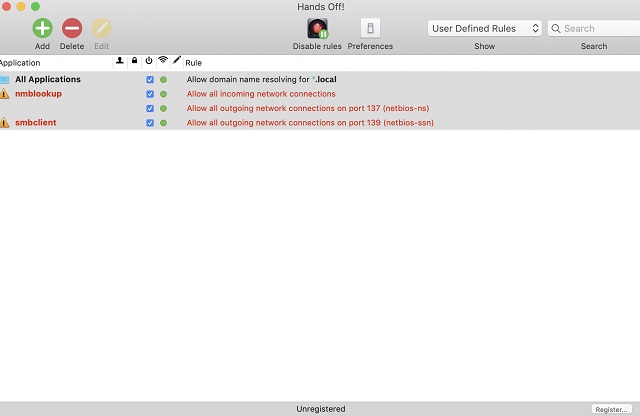Latest Version:
Requirements:
Mac OS X
Author / Product:
Objective Development Software GmbH / Little Snitch for Mac
Old Versions:
Filename:
LittleSnitch-3.6.dmg
MD5 Checksum:
88f95ddd7c3e4b7819e7110a8136713a

Little Snitch Crack
Personally, I think that it is a very useful answer, and good answers aren't always literal responses to the stated question, but the OP didn't ask for software recommendations, or other alternatives, but for reasons to prefer Little Snitch over the default firewall. – Daniel ♦ Jan 16 '12 at 7:08. Sep 08, 2017 Little Snitch 4: Watching for chatty apps. As in previous versions, Little Snitch’s most obvious use is in alerting you to the network activity of applications and low-level software. You can like or dislike Little Snitch, and you can be for or against transparency, you can support or oppose the inquisitive mind and the search for answers, but there is an underlying problem here, that has nothing to do with Little Snitch. It is the fact that a process like APSD even exists.
Little Snitch Memory Consumption List
Little Snitch informs you whenever a program attempts to establish an outgoing Internet connection. You can then choose to allow or deny this connection, or define a rule how to handle similar, future connection attempts. This reliably prevents private data from being sent out without your knowledge. Little Snitch for Mac runs inconspicuously in the background and it can also detect network related activity of viruses, trojans and other malware.
Features and Highlights
Silent Mode – Decide Later
There are times where you don’t want to get interrupted by any network related notifications. With Silent Mode you can quickly choose to silence all connection warnings for a while. You can then later review the Silent Mode Log to define permanent rules for connection attempts that occurred during that time.
Research Assistant
Have you ever wondered why a process you’ve never heard of before suddenly wants to connect to some server on the Internet? The Research Assistant helps you to find the answer. It only takes one click on the research button to anonymously request additional information for the current connection from the Research Assistant Database.
Automatic Profile Switching
Rules can be arranged in different profiles like “Home”, “Office” or “Mobile Internet”. This allows you to use different sets of filter rules depending on the network you are currently connected to. Profiles can be activated either manually from the status menu, or automatically, whenever you join a network that’s associated with one of your profiles.
Firewall for incoming connections
Little Snitch for macOS not only reveals any outgoing network connection attempt to make sure that sensitive data doesn’t leave your computer without your consent. The inbound firewall in LittleSnitch provides you with the same level of control for incoming connections.
Note: Requires 64-bit processor. The demo runs for three hours, and it can be restarted as often as you like. The Network Monitor expires after 30 days.